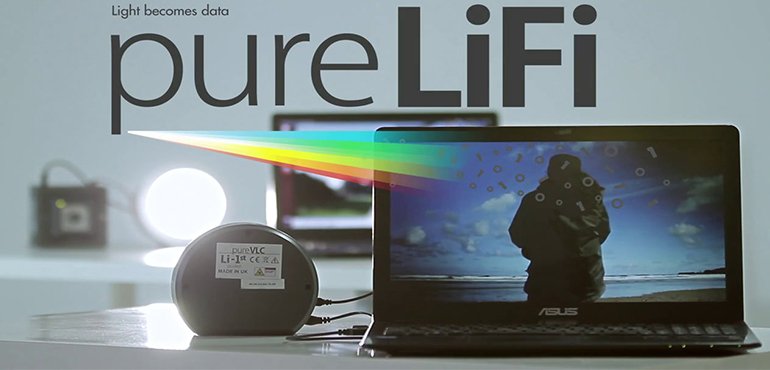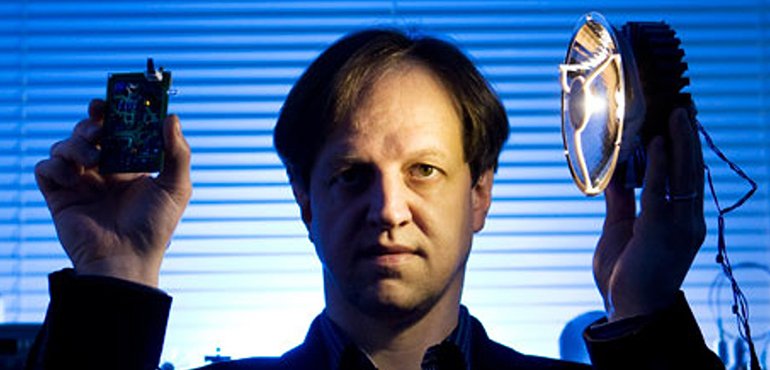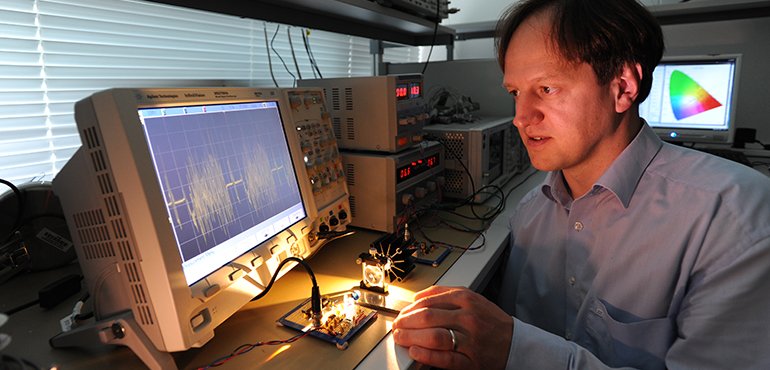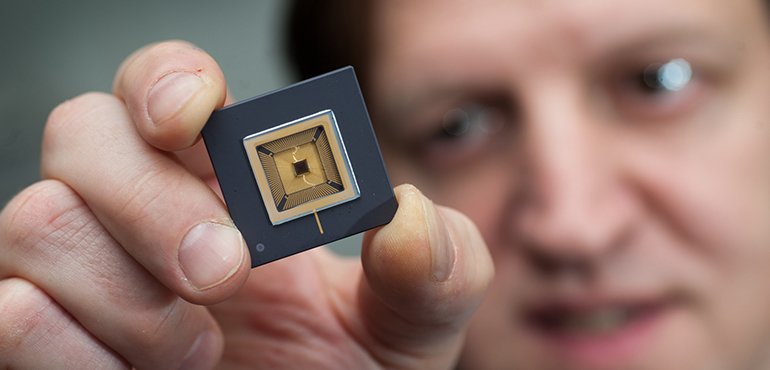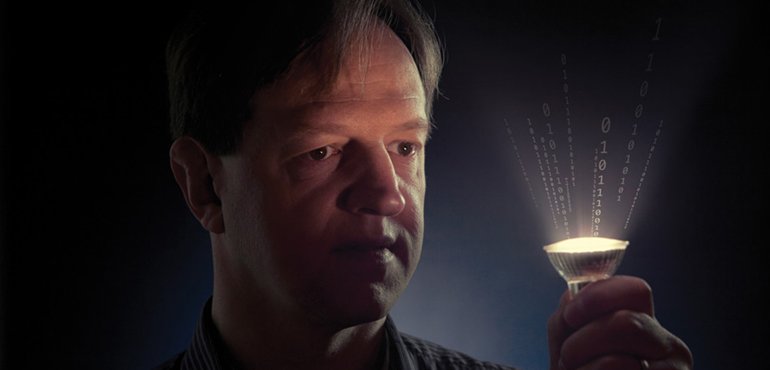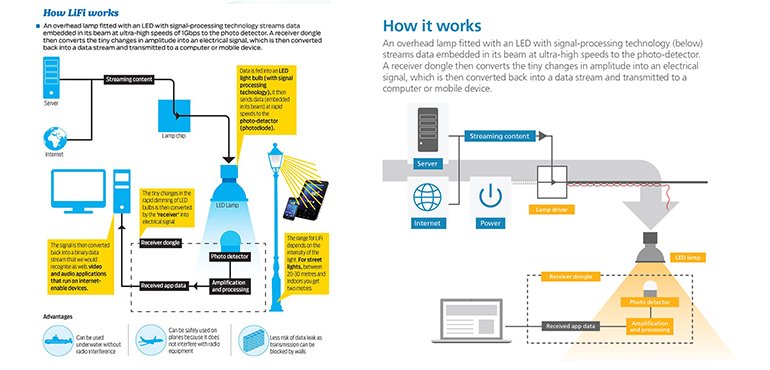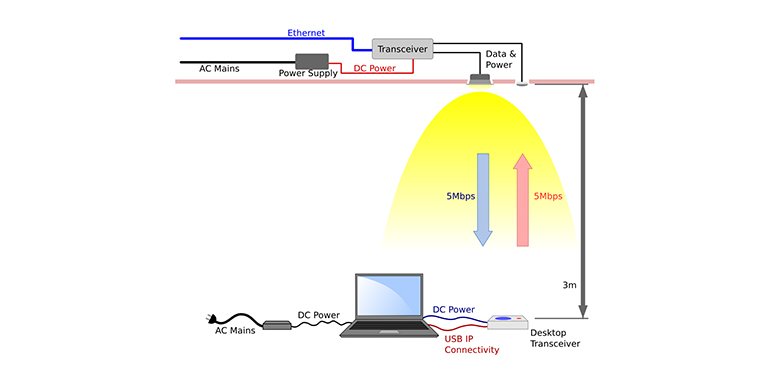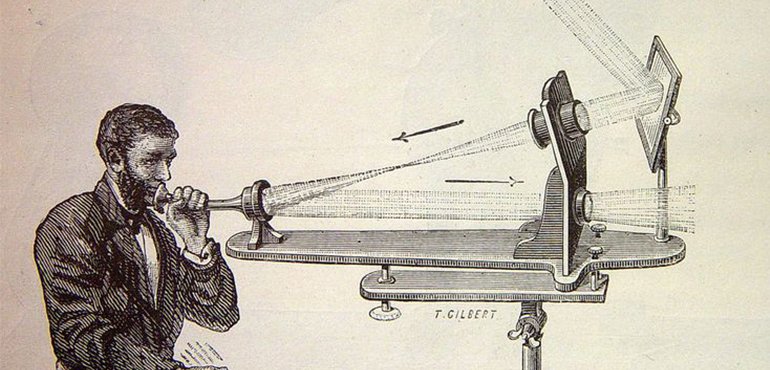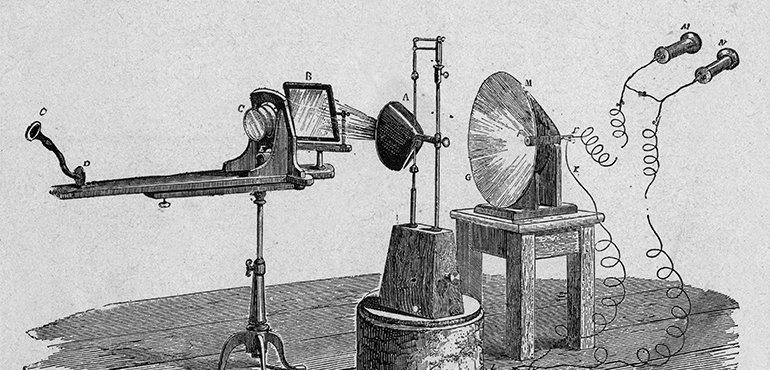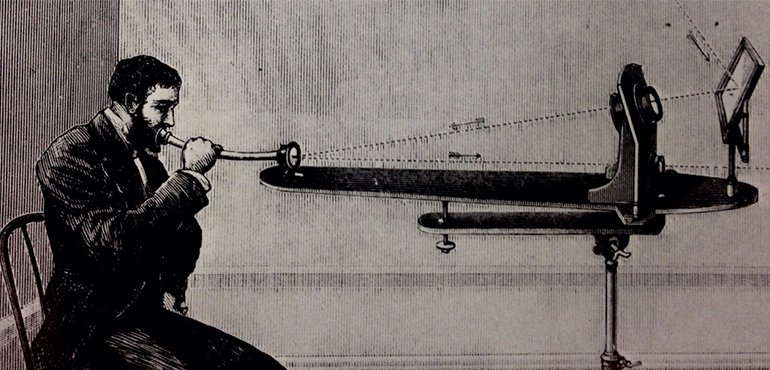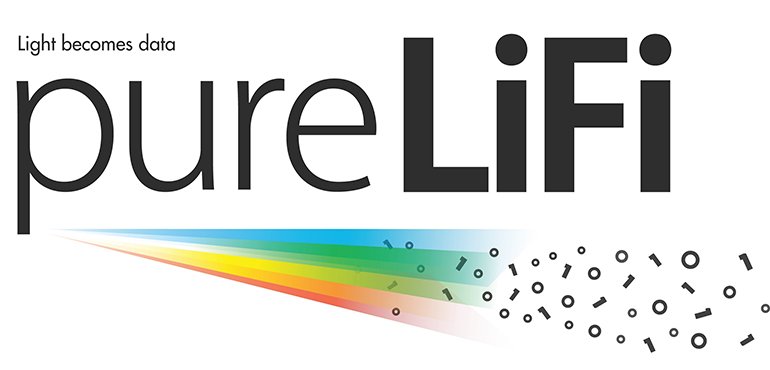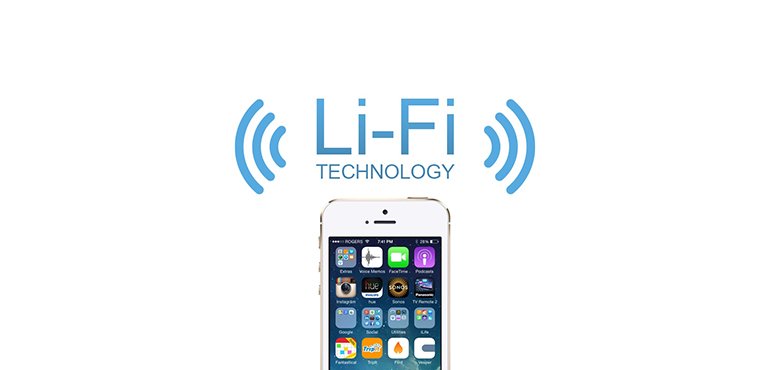A NEW TECHNOLOGY: LI-FI
A NEW TECHNOLOGY: LI-FI The internet of things is the communication model between objects that we use in our business or daily life (For example smart homes, surveillance, security and alarm systems, etc.) and it can independently communicate with the user. Considering this definition, the Internet of Things is becoming widespread and developing day by day. Every day more and more users become online and the number of devices with Wi-Fi is increasing. Mobile devices are estimated to reach 11.6 billion in 2021, surpassing the world population of 7.8 billion. According to these data, it is predicted that only mobile data will reach 35 quintillion per month. The circulation of this much data can interfere with Wifi signals, limitations, and slowing down of internet speed, etc. It causes such problems to emerge and will continue so. WHAT IS Li-Fi? Li-Fi (Light Fidelity) is a new high-speed technology that can communicate wirelessly with led lights. German-born Professor Harald Haas from Edinburgh University first introduced the term Li-Fi in his TED speech in 2011, 6 years ago. Professor Haas is also the founder of a company named PureLiFi with a value exceeding 14 million. HOW FAST IS Li-Fi? In recent experiments, up to 224 gigabytes per second at Li-Fi speed. At these speeds, a person can download 20 movies of data within a second. According to Haas's research, Li-Fi can reach 1000 times more data density than Wi-Fi because Li-Fi signals are gathered in a small region, unlike more scattered radio signals. The researchers recently reported that they exceed 20 times the data rate they sent. These speed values are expected to increase even more. DETAILS OF Li-Fi TECHNOLOGY Although Wi-Fi uses radio waves, Li-Fi uses light waves or infrared and near-ultraviolet spectrum. These signals work by turning the bulbs on and off in nanosignals that are too fast to be noticed by the human eye. For example, when we change the TV channel with the remote control, we establish a small Li-Fi communication. Professor Haas states that the infrared LED bulbs in the remote control devices are also turned off and on, resulting in low speed data flows (20 thousand bytes per second). The only difference is that like a remote control device, instead of a single stream, Li-Fi is a system that uses thousands of data streams in parallel, thereby increasing the speed and the amount of data transmitted. Since this technology works with the lights blinking which is not possible to track, we can continue to benefit from the bulbs without interruption and transfer data even if we dim our light. "The visible light range is 10 thousand times wider than the radio frequency range," says Haas. Based on his comparison in "This means that Li-Fi can become a great resource, just like a giant pipe with continuous data flowing through it", we can confidently assume that Li-Fi technology as a solution to the bandwidth problems of WI-FI. Li-Fi requires a light source such as a standard led lamp, an internet connection and a photodetector. Prof Haas believes that consumer-oriented products will be available on the market within 5 years and everyone will also use this technology too just like 4G, 5G, Wi-Fi. According to Haas, there are currently 14 billion LED bulbs that could gain Li-Fi feature only by a single device, and these bulbs can be made compatible with the new technology by adding a cable attached to the ethernet from the ceiling. Considering that we use artificial light in our belongings, cars, at home, on the street, everywhere in short, the infrastructure of Li-Fi technology is quite wide. Today, many countries are replacing street lights with led bulbs, aiming to reduce carbon emissions. Led bulbs have lower consumption and create less light pollution, moreover, these street lights may even become our free internet access points when walking in the city in the future. "The idea of Li-Fi is actually relatively old, When Alexander Graham Bell invented the photophone in 1880, he proved that light could be used for communication. But the real idea of Li-Fi was born when LED lights came out because they have the ability to transmit data really fast. I realized this when I started my first project at the university 12 years ago while aiming to transfer the data via LED with a modulation technique. This experiment was very successful. ” saysProfessor Haas. For now, the developing Li-Fi technology gets turned off when turning off the light, but in the future, it can also be moved to remote locations using top transmitters and roof solar panels. But this feature also has a good side. According to Haas, “Li-Fi is really safe because contrary to the Wi-Fi connection, the light cannot pass through the walls. If you check, you can find an average of 10-15 Wi-Fi networks around you, which means that a malicious person can hack them if they want. This is not possible with Li-Fi connection because the walls block the light ”. “Li-Fi is basically the same as Wi-Fi, just a little difference; we use LED lights to transfer data wirelessly instead of using radio signals. ” says Haas. “The radio spectrum is not enough,” says Haas and continues “It is very heavily used, very crowded. This to airports and hotels; we see where people want to access mobile internet and where the internet is terribly slow. I guessed this would happen 12-15 years ago and I asked myself what are the better ways to transfer data wirelessly?” Haas says; “Incandescent bulbs only transmit light. In twenty years, LED bulbs will transmit hundreds of applications ”. '' We're just at the beginning of it and we remember the first mobile phones. They are not like what we see today. Li-Fi is also a big improvement and has not even started mass production. But it will grow at a high rate in 5 years. In order to benefit from this growth, PureLiFi is working on 3rd generation products. During the MWC (Mobile World Congress) event, we introduced a network entirely established with Li-Fi. You have the same principles as Wi-Fi, but you can walk around and transmit data to many users at the same time." says Professor Haas. "We named this as LiFlame. The system can provide 10Mb / s downlink and 10Mb / s uplink in 3 meters area with standard lighting tools, we can obtain 2Mb / s data density per square meter. We have started pilot applications in the security and defense sectors. Also, in the lighting and communication sector. One of the most satisfying developments is that we have reached the potential of dealing with California's Golden State Warriors basketball team ”. adds Professor Haas. Professor Haas wants to see that Li-Fi technology was used in a structure that will become San Francisco's largest and most technological sports complex in 2018. Li-Fi street fixtures will also transmit data to people from above. “We hope that this technology will come to life in the new arena… For such a large crowd, individual level communication is needed. "Wi-Fi cannot offer the bandwidth to do this, but Li-Fi can provide it in such an environment." USAGE AREAS OF Li-Fi It can be used in locations requiring risk management such as oil refineries, in aircraft cabinets without causing electromagnetic interference, in environments with electromagnetic sensitivity such as hospitals and nuclear power plants, in high-security areas, in old buildings where Wi-Fi signal cannot pass. The US navy has allocated funds to research and develop Li-Fi technology, in which they discovered that Li-Fi is also working underwater. It is envisaged to be used in many different areas such as cars that can communicate with each other via LED headlights, white goods connected to the home network and internet over Li-Fi. It is expected that Li-Fi will come to the fore more with its use in aircraft and as reliable data transfer. Although the Li-Fi equipment is too large to be used on mobile devices for now, reducing the equipment is the goal of PureLiFi company. This version of the option is still too big to fit in a smartphone. But since the language of “Li-Fi Capability” has appeared for an iPhone that will be released in the future, it does not seem impossible to implement the smartphone version. People who do research on Li-Fi technology are not limited to Harald Haas and his team. Chinese researchers have also developed a basic Li-Fi prototype that can run many laptops by working with an LED bulb. NASA has announced that it will work on the potential use of Li-Fi in space travel. PureLiFi has already started producing Li-Fi routers for its customers. “Li-Fi will become part of wireless systems within 10 years, which is very exciting,” says Harald Haas. Also Prof. Haas wants to promote the city of Edinburgh specifically as "Li-Fi City". The Li-Fi market is estimated to reach $ 9 billion in 2018, and as the companies that show interest in the future increase, the estimated numbers will increase. “Whenever I go out and see a lamp, I think of Li-Fi and I think what can be done with it as a service. With each new connection, 100 new applications are possible and many differences will be added in terms of application development. We witnessed this with iPhone. This little device connected many people. Think about how many applications are running on it. Now think about the lighting system in your home and what these lights can provide.' says Haas. ' So, will Li-Fi replace 4G and Wi-Fi connections and turn into the technology that dominates the internet? To the question, Haas' response is: "No". But to himself, “Li-Fi will be one of the most common technologies people will use to access the internet over the years. Everyone will get used to it and become part of the wireless communication mix ”.

Also, Li-Fi technology is expected to be 10 times cheaper than Wi-Fi technology. What do you think? Isn't this a great news? Like everyone, we also sometimes go crazy because of especially slow Wifi, internet quota, and no fiber infrastructure due to small numbers of demand. so we can not wait to see the success of Professor Harald Haas and wish everyone a day with Li-Fi.
